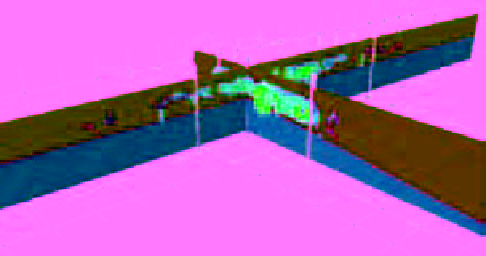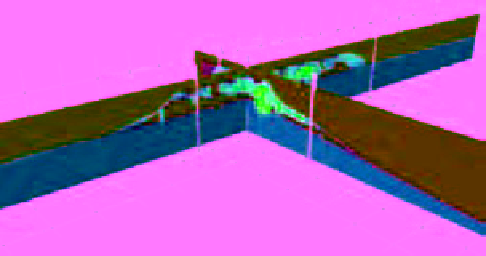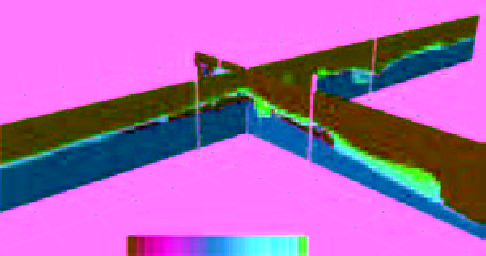Geoscience Reference
In-Depth Information
2
km
N/G
1
0
Fig. 7.
Static reservoir model of the simulated Base case scenario indicating the net-to-gross ratio (N/G) at the palaeo delta
top as well as the location of five synthetic wells (D3D01 - D3D05).
2
k
m
Initial
Base case
Q
low
Q
high
0
N/G
1
Fig. 8.
Fence diagrams of all four scenarios (Initial, Base case,
Q
low
and
Q
high
) showing stratal heterogeneity in net-to-gross
ratio (N/G) and well locations (see Fig. 7 for well labels).
lower part of the delta succession is preserved and
capped with a thin shoreface lag deposit. Well
D3D03 for the initial scenario shows a distal delta
progradational succession, similar to well D3D01.
This succession is eroded by waves in the Base
case scenario. The increase in sand input by the
distributary channel for the
Q
low
and
Q
high
scenarios
leads to well-sorted deposits of sand that has been
transported by wave-induced longshore currents
(Fig. 4C and F).
In contrast, well D3D04 displays a vertical succes-
sion near the delta apex which is dominated by
channelised flow. Channel migration during delta
progradation has resulted in a thick succession of
well-sorted sand. Due to its inland location, it is
unaffected by wave reworking. Furthermore, the












Search WWH ::

Custom Search